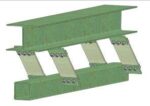Why companies need to automate their workforce management
In the picture: James Kissell, marketing director at WFS For many manufacturing companies, labour is the highest business cost and sometimes also the most variable cost. Manufacturing companies can gain better insight into these costs and how to manage them more effectively with workforce management technology. This can result in significant benefits to the bottom line. Many manufacturing companies still rely on manual processes, spreadsheets, and outdated technology to manage their workforce. However, companies that implement workforce management technology have better insights into scheduling, absence and leave management, and overall compliance. This lets them create lean staffing levels, control labour costs, and improve productivity, helping them achieve cost savings and efficiency benefits. According to a study by the Aberdeen Group, automated workforce management software users achieve 54 per cent more revenue per full-time equivalent worker by automating time and attendance, compared with those that don’t. Using manual processes instead of automating opens up the possibility of errors, particularly when it comes to rosters and leave management. It makes it difficult for organisations to get a clear picture of how their workforce is performing and where they may need to make changes. Workforce management systems ensure greater levels of compliance with wage and hour regulations across different legislative zones. This helps to protect the organisation’s bottom line from unexpected regulatory fines and violation fees. By automating these processes and including self-service options for employees, manufacturing businesses can dramatically reduce the amount of time required to manage their employees according to various workplace regulations and legislation. As well as reducing the amount of time it takes to manage employees, automating workforce management can deliver better insight into the strategic strength of the workforce and better utilisation of resources, resulting in lower costs. Unpredictable schedules can result in unplanned overtime expenses, which can […]










